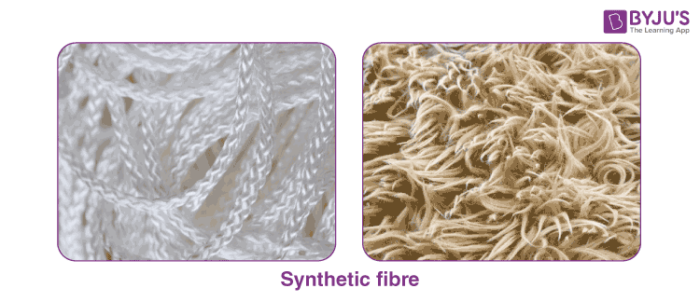Table of Contents
What are Synthetic Polymers
Synthetic polymers are those which are human-made polymers. Polymers are those which consist of repeated structural units known as monomers. Polyethylene is considered to be one of the simplest polymers, it has ethene or ethylene as the monomer unit whereas the linear polymer is known as the high-density polyethylene-HDPE. Many of the polymeric materials have chain-like structures which resemble polyethylene.

Synthetic polymers are sometimes referred to as “plastics”, of which the well-known ones are nylon and polyethylene. The polymers which are formed by linking monomer units, without any change of material, are known as addition polymers or also called chain-growth polymers. All these are said to be synthetic polymers.
Some synthetic polymers which we use in our everyday life include nylons used in fabrics and textiles, teflon used in non-stick pans, and polyvinyl chloride used in pipes. The PET bottles we use are commonly made up of synthetic polymer called polyethylene terephthalate. The covers and plastic kits comprise synthetic polymers such as polythene, and the tyres of vehicles are manufactured from the buna rubbers. But on the other side, there also arises environmental issues by the use of these synthetic polymers such as the bio plastics and those made from petroleum as they are said to be non-biodegradable.
Types Of Synthetic Polymers with Examples-
There are various synthetic polymers developed so far. Let us study in brief about a few of the synthetic polymers used in everyday life-
-
Nylon-
- Nylon belongs to the synthetic polymers family and is also known as polyamides. It was produced on February 28 in the year 1935 by a person named as Wallace Carothers at the DuPont’s research facility. Nylon is a widely used polymer. The backbone of it called as amide causes it to become hydrophilic than other polymers. Nylon gets engaged in hydrogen bonding with water, not like the pure hydrocarbon polymers which make most of the plastics.
-
Polyvinyl Chloride –
- Polyvinyl chloride or PVC is the third-most majorly produced plastic coming after polypropylene and polyethene. This PVC is used for construction purposes as it is known to be stronger and cheaper than other alternatives like copper or iron. PVC is also used in clothing, electrical cable insulation including many other applications replacing rubber.
-
Low-Density Polyethylene–
- Low-density polyethene polymers are the most common kind of synthetic polymers, which are widely used in households. LDPE is a kind of thermoplastic which is prepared from the monomer called ethylene.
-
Polypropylene–
- Polypropylene also called polypropene is a kind of thermoplastic synthetic polymer which is used in a variety of applications such as packaging, labelling, stationery, textiles, plastics and in reusable containers, laboratory equipments etc.
Some other examples include thermoplastic polyurethane, teflon, polystyrene, high-density polyethene, neoprene, etc.
Uses Of Synthetic Polymers
Some uses are given below-
- The polymer called polyethylene is used in plastic bags and film wraps.
- Polyethylene is utilised in bottles, electrical insulation, toys, etc
- Polyvinyl chloride(PVC) is used in siding, pipes, and flooring purposes.
- The synthetic polymer polystyrene is used in cabinets and in packaging.
- Polyvinyl acetate is used in adhesives and latex paints.

First of all I am very thankful to you. It is very glad to read the article. This article helps the people to gain their knowledge in the specific field.
I would like to share some details where it helps the people to gain knowledge
very useful thank you
Polyethylene belongs to which class of synthetic polymer?
Polyethylene belongs to the class of synthetic polymer called nylon.
I am very grateful for dis knowledge i ve gotten thank u